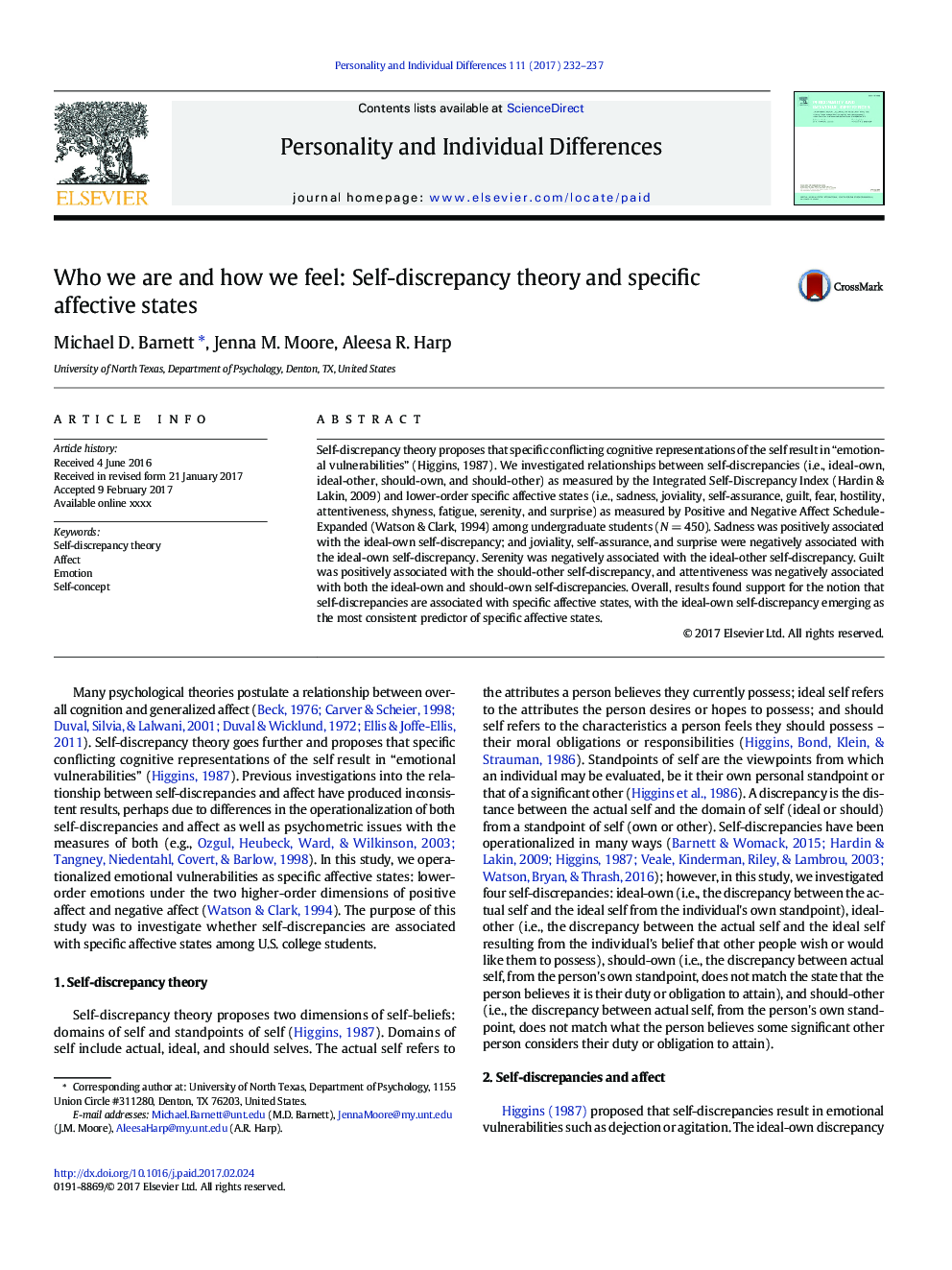| Article ID | Journal | Published Year | Pages | File Type |
|---|---|---|---|---|
| 5035945 | Personality and Individual Differences | 2017 | 6 Pages |
Abstract
Self-discrepancy theory proposes that specific conflicting cognitive representations of the self result in “emotional vulnerabilities” (Higgins, 1987). We investigated relationships between self-discrepancies (i.e., ideal-own, ideal-other, should-own, and should-other) as measured by the Integrated Self-Discrepancy Index (Hardin & Lakin, 2009) and lower-order specific affective states (i.e., sadness, joviality, self-assurance, guilt, fear, hostility, attentiveness, shyness, fatigue, serenity, and surprise) as measured by Positive and Negative Affect Schedule-Expanded (Watson & Clark, 1994) among undergraduate students (NÂ =Â 450). Sadness was positively associated with the ideal-own self-discrepancy; and joviality, self-assurance, and surprise were negatively associated with the ideal-own self-discrepancy. Serenity was negatively associated with the ideal-other self-discrepancy. Guilt was positively associated with the should-other self-discrepancy, and attentiveness was negatively associated with both the ideal-own and should-own self-discrepancies. Overall, results found support for the notion that self-discrepancies are associated with specific affective states, with the ideal-own self-discrepancy emerging as the most consistent predictor of specific affective states.
Related Topics
Life Sciences
Neuroscience
Behavioral Neuroscience
Authors
Michael D. Barnett, Jenna M. Moore, Aleesa R. Harp,
